The Raincross Gazette is on Summer Break
The Gazette's 2.5-person newsroom is on a publishing break through the end of July. Regular publishing will resume on Monday, August 4, 2024.
historical journey that chronicles the rise of a Riverside icon, from its inception as the Miller family's home to the illustrious Mission Inn.

In the spring of 1874, Christopher Columbus Miller arrived in the four-year-old city of Riverside from Tomah, Wisconsin. I recently spent a couple of weeks at the end of May and early June in this small town in my home state of Wisconsin and once more explored some of the connections between this area of the state and Riverside. I cannot claim anywhere near the significance of importance as one from Wisconsin, as does C. C. Miller and his more famous son, Frank Augustus Miller.
C. C. Miller was a civil engineer who soon obtained work surveying the early canals in Riverside. He purchased a city block in the mile-square area of downtown Riverside, a block that was bordered by Main, Sixth, Orange, and Seventh (today Mission Inn Avenue). He soon sent for his wife (Mary) and children (Emma, aged 20, Frank, 17, Alice, 14, and Edward, 10) to join him, and they arrived in October of that same year. The next year the Millers began building their home on this property. The structure was adobe on the first floor and a wooden second floor, consisting of twelve rooms. It was finished enough for the family to move in during July of 1876 and named the Glenwood Cottage. By November, the family was ready to take in guests, and Albert S. White became the first paying guest on November 22, 1876. A Riverside hotel was born.
White spent the rest of his life residing at Miller’s Glenwood Cottage and later moved into the newly expanded Glenwood Mission Inn. White Park in downtown Riverside is named for Albert White.
Over the next years, additions and improvements were made to this family-run hotel. In February of 1880, C. C. Miller sold the property and the Glenwood to his son, Frank. For the next fifty-five years, Frank A. Miller developed and changed, and improved his beloved hotel. In 1888 the hotel was renamed the Glenwood Tavern. Frank soon felt a need to vastly upgrade his modest holding and give Riverside a grand hotel to lure visitors who came to Southern California for the winter.

By 1902 Miller finally obtained enough financing for his planned venture. The largest investor was Henry H. Huntington, owner of the Pacific Electric Company. The architect chosen for this ambitious project was Arthur B. Benton.
Benton, along with Charles Lummis and others, formed in 1895 the Landmarks Club in order to preserve historical sites in California, especially the early Spanish Missions. Benton began employing the Mission Revival style of architecture. In 1900 one of his early projects in this style was the First Church of Christ, Scientist in Riverside (Riverside City Landmark #7 still at 3606 Lemon Street). The newly built church caught the attention of Frank Miller, and he hired Benton to design his dream hotel.
Finished in January 1903, the newly built Glenwood Mission Inn opened to guests. The u-shaped Mission Wing, as the first of four major wings is called, faced Seventh Street. Guests drove onto the property from Seventh and circled the Old Adobe, a one-story remnant of the original adobe Glenwood Cottage. Next to the Old Adobe was the Campanario, a bell tower patterned after one at the San Gabriel Mission.
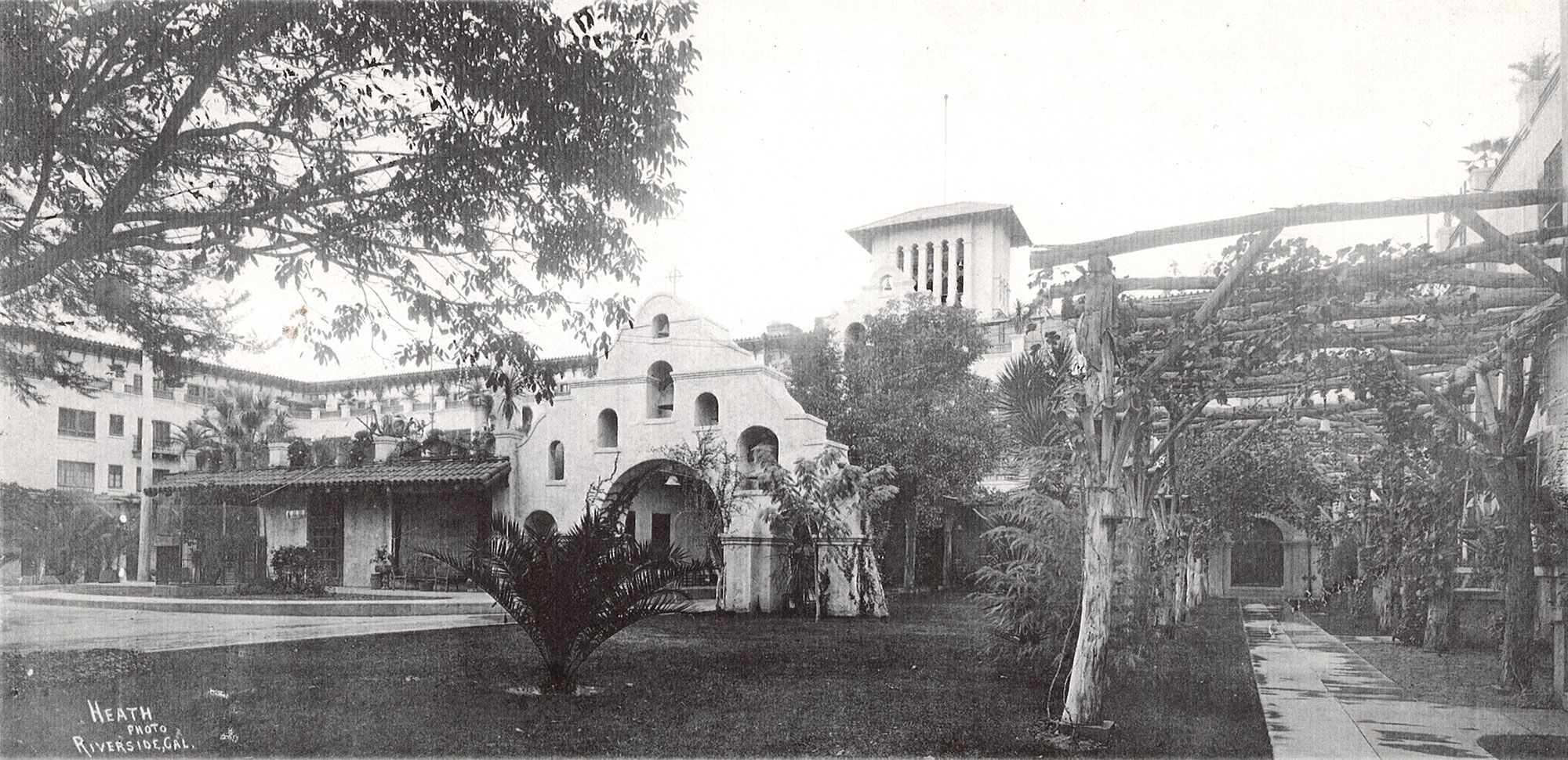

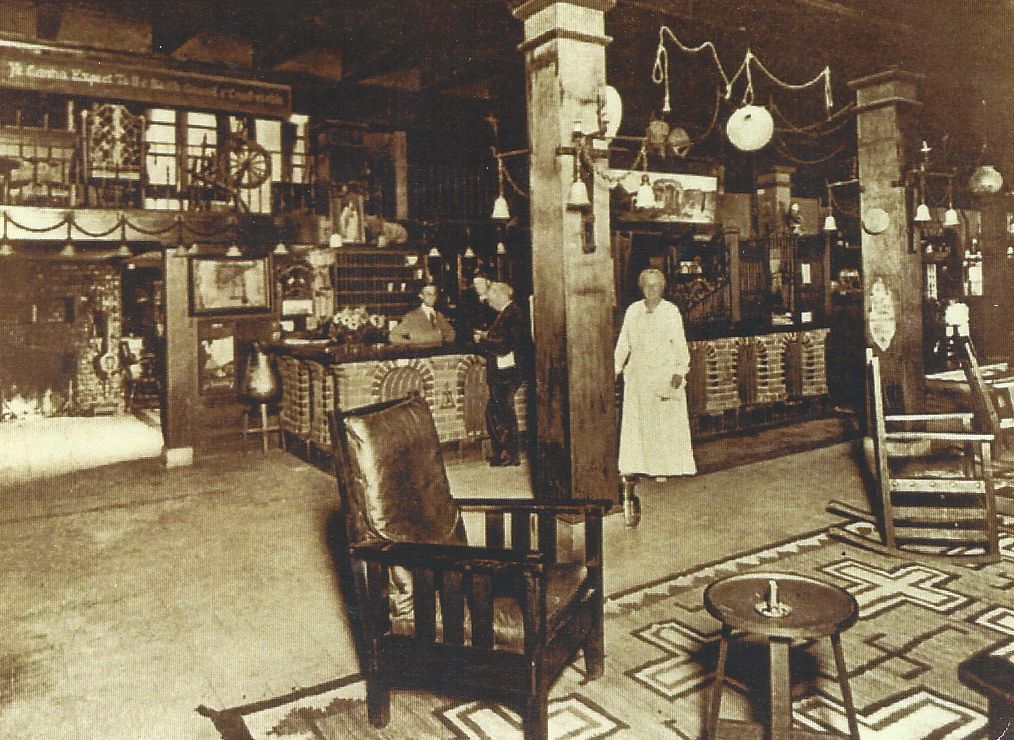
The newly built Glenwood Mission Inn, Frank and Isabella Miller on horses underneath the Campanario, the lobby of Glenwood Mission Inn, the woman in white is Frank’s sister, Alice Richardson, who managed the Inn for many years. (From the author's collection)
President Teddy Roosevelt was one of the first famous guests to stay at the new Glenwood Mission Inn. Arriving in Riverside on a Santa Fe train late in the afternoon on May 7, 1903, Roosevelt spent the night at this new hotel. The next morning before departing Riverside, he planted one of the two original navel orange trees in the courtyard in front of the Old Adobe.
Frank Miller was not satisfied for long, and by 1909 he had Arthur Benton working on plans for the next addition, the Cloister Wing. This wing includes the Cloister Music Room, the Carmel Dome on the corner of Sixth and Orange Streets, and buttresses along Orange patterned after the ones at the San Gabriel Mission. This wing was formally opened in July 1911. Arthur Benton later, in 1925, designed the Peace Tower and Bridge situated atop Mount Rubidoux.

For the next addition to the Mission Inn, Miller turned to architect Myron Hunt. Hunt had designed, in 1910, the mansion in San Marino for Henry Huntington and would later also design the Huntington Library. The Spanish Wing was under construction by May 1913 and completed by December 1914. Built in the Spanish Colonial Style, this wing includes the Spanish Art Gallery, the Spanish Dining Room, and the Spanish Patio.


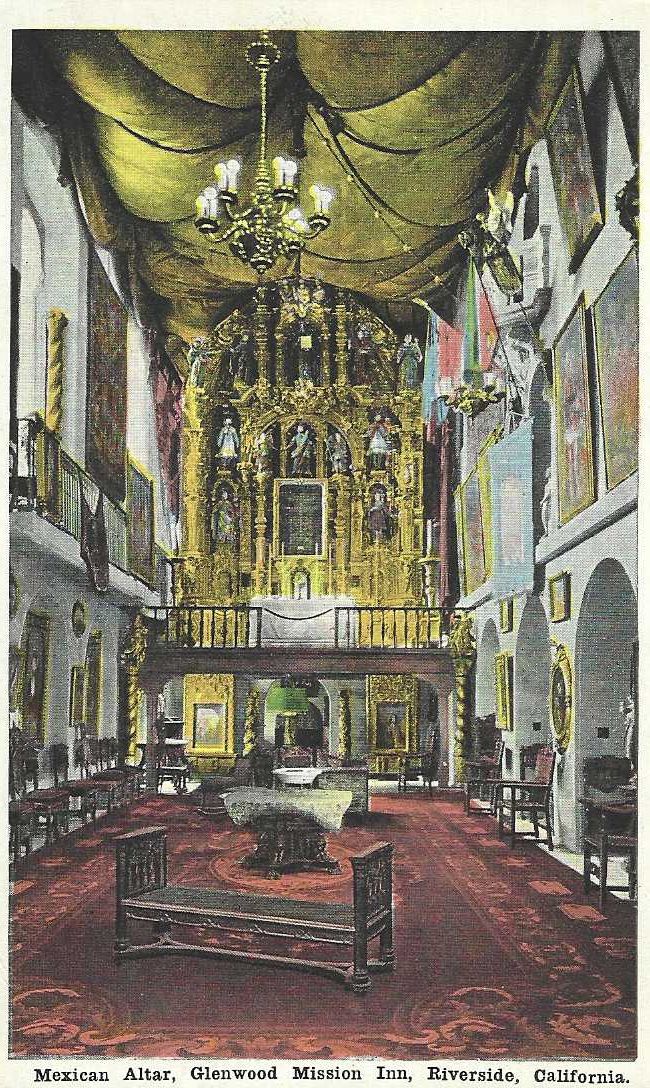
Postcards of the Spanish Patio, Spanish Dining Room, and Spanish Art Gallery, the first location of the Reyes Altar. (From the author's collection)
The last major wing of the Mission Inn, the Rotunda addition, began in June of 1929 and was finished in October 1931. Designed by G. Stanley Wilson, this addition includes the six-story Rotunda with its circular staircase erected for offices and businesses, the Galeria, and the St. Francis Chapel. This final addition made the Mission Inn fill the whole block and was the last major work done. Frank Miller died on June 15, 1935, and a special era ended. Frank A. Miller, throughout most of his life, promoted his Mission Inn to promote the city of Riverside and promoted the city of Riverside to promote his Mission Inn. There has been no one like him in Riverside’s history, and the Mission Inn remains his legacy.
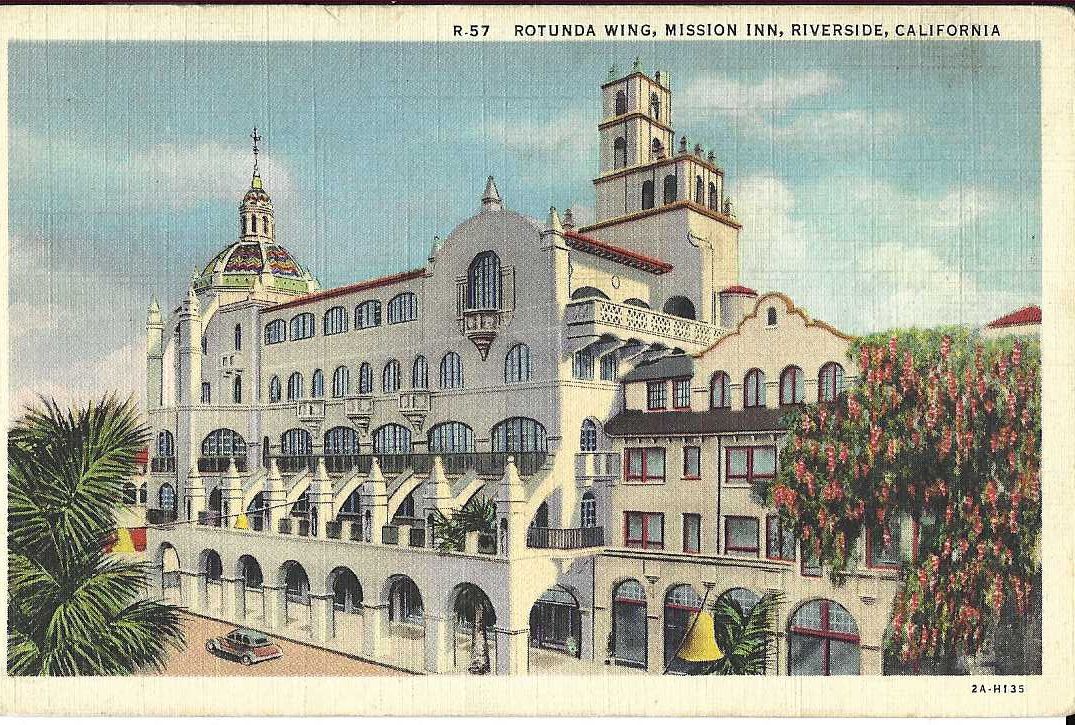

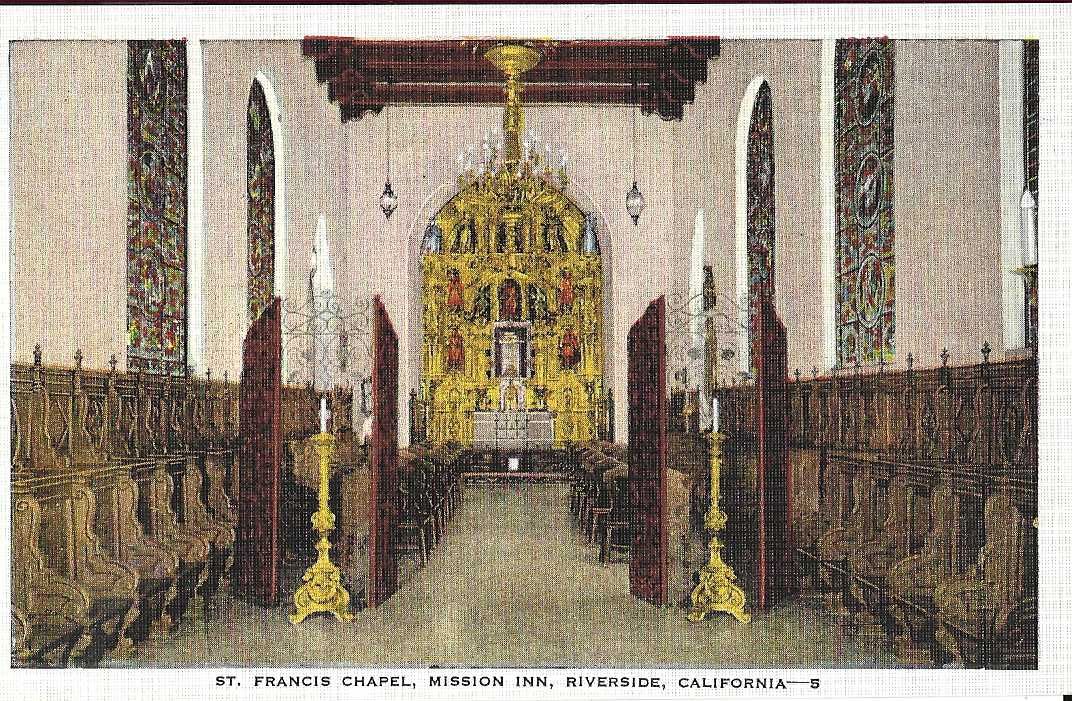
Postcards of the Rotunda Wing and St. Francis Chapel courtyard and interior. (From the author's collection)
This is a very brief overview of the history of the Glenwood Mission Inn. To learn more about the history of our Riverside historic landmark, visit the Mission Inn Museum at the corner of Main Street and Mission Inn Avenue and take a tour led by trained docents.
You can read about the history of the Glenwood Mission Inn. Some books to read are The Mission Inn: Its History and Artifacts by Esther Klotz, Master of the Mission Inn by Maurice Hodgen; Frank Miller of Mission Inn by Zona Gale, Riverside’s Mission Inn by Steve Lech and Kim Johnson, When Teddy Came to Riverside by Glenn Wenzel, and Historic Mission Inn published by the Friends o the Mission Inn. They can all be found at the downtown library. Most are also available for purchase at the Mission Inn Museum.
Let us email you Riverside's news and events every Sunday, Monday, Wednesday, and Friday morning. For free.